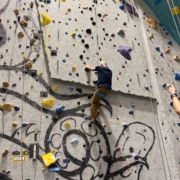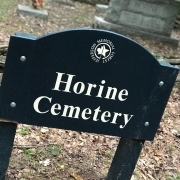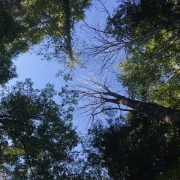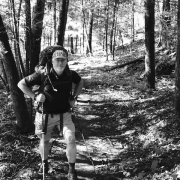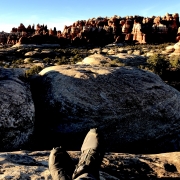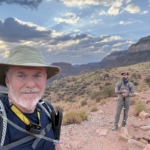Joseph Pilates: The Quiet Revolutionary | Healthy Aging Series: S11 E2
I watched the Mike Tyson/Jake Paul fight last night. It’s probably the first professional fight I’ve watched in 20 years, maybe even longer. As a new therapist in 1997, I was working for the community health center, and I was mesmerized by Mike Tyson. I remember watching him bite off the ear of Evander Holyfield. That cost him $3 million. Five years later after losing to Lennox Lewis, he retired. “I’m going to fade into Bolivian,” he responded when asked what he was going to do. I overlooked the verbal faux pas because there was something endearing about him.
I know there was very little chance of Tyson beating Jake Paul, but I told myself, “I hope he wins.” They showed him walking around his locker room, mostly naked and he looked strong. He looked very good for a man who is in his late 50s, 58 to be exact. He was and is built like a Greek Adonis. But it is more than his strong physique, and those very cool tats that draw people to him. I think people are intrigued by his personality. He’s such a simple, straightforward, unpretentious person. It’s his trademark. I know he did the fight for money, after all he made $20 million in the fight. But he walked out to the ring by himself, no bling, no glitz, wearing a black pullover sweatshirt. That was Mike Tyson’s trademark, and that’s what earned him $20 million. His personality.
Joseph Pilates
I recently read two books about Joseph Pilates, “Caged Lion,” by John Howard Steel and “Pilates: Return to Life through Contrology,” by Joseph Pilates and William Miller.
You might recognize that name as the founder of Contrology, but have you ever heard of Contrology?
Joseph Pilates was the complete opposite of Mike Tyson. He had no trademark personality, and although he developed a revolutionary approach to fitness, it became what we call Pilates despite his personality and personal life. He nearly sabotaged the movement that bears his own name.
Living in the Shadows
Joseph Pilate spent most of his life living in the shadows. During his 40+ years in America as a US citizen, he never paid any income tax, he never had a bank account, and to the best of his wife’s knowledge, he had no Social Security number. He only used cash.
He would charge five dollars for each session at his fitness gym. He paid cash for everything. He never talked about his past. He never owned property, and he never married his widow, Clara. In his book, “Caged Lion,” John Steel describes the final four years that he spent with Pilates leading up to his death from complications related to COPD. Pilates wasn’t much of a talker. He rarely chitchatted during training sessions. He had terrible customer service skills and was often rude to his trainees. I think he knew exactly how much money he needed to live and served enough clients over 40 years to make that amount. He didn’t want to build a business.
If you think about the modern fitness culture, you will notice a lot of promotion and advertising. I’ll share episodes about Jack Lalaine, and I’ll have episodes about Jazzercise, episodes about Richard Simmons, Adele Davis, and Bernard McFadden.
Some of those you know, but all of them promoted their ideas and exercise programs. Joseph Pilates did nothing to promote Contrology. It was all about word-of-word of mouth.
At the time of his death, all he had was a small, leased gym, downtown New York City, 25 to 50 clients, a half dozen assistance, and some equipment.
And not long after his death, he lost the lease on that gym. Clara, his wife had an envelope with $1000, and that’s it.
What did he Leave?
He did co-author a book with William Miller titled, “Return to Life through Contrology.” I’ll share my thoughts about that book in a bit.
He developed equipment for doing the exercises that he developed, and they are still being used today (The reformer).
So how did it become a mega-fitness program bearing his name with 10 million adherents?
Steel provides an answer. “Fortunately,” he writes, “he had disciples.”
I think it was more than just having disciples. There was something about Joseph Pilates that contributed to the success of Contrology. It was his religious devotion to what he believed in. He was passionate about Contrology.
In “Return to Life through Contrology,” Pilates wrote, “Physical fitness is the first requisite of happiness.”
“Fitness can neither be acquired by wishful thinking, nor by outright purchase. However, it can be gained to performing the daily exercises, conceived for this purpose by the founder of Contrology who’s unique methods accomplish this desirable result by successfully counteracting the harmful inherent conditions associated with modern civilization.”
“One of the major results of Contrology is gaining the mastery of your mind over the complete control of your body.”
“Contrology,” he writes, “develops the body uniformly, corrects wrong postures, restores physical vitality, invigorates mind, and repairs the spirit.“
“The science of Contrology disproves the prevalent and all two trite saying, “You’re only as old as you feel.” The art of Contrology proves that the only real guide to your true age lies not in years or how you think you feel, but as you actually are as infallible, indicated by the degree of natural and normal flexibility enjoyed by your spine throughout life. Your spine is inflexibly stiff at 30, you are old; if it is completely flexible at 60, you are young.”
A Passion for Contrology
In his book, Pilates focuses on full-body workouts, flexibility, getting good sleep, posture, breathing, and the body-mind connection. There is no way to cover Contrology in this short essay, but it is important to know that Pilates practiced it, taught it, and perfected it over 40 years. He made disciples because he had a passion for Contrology.
It was also his methodology that made disciples.
Steele writes, “Joe demanded your full attention. He prevented distractions, including self-created ones like thinking. He forced you to turn off your analytical, orderly, notetaking, and mesmerizing mind. He made your body find its way to be graceful and efficient. He refused to explain why he had you do anything, or why he did anything. If you had a question, he ignored it. He couldn’t be interrupted, and he remained focused 100% on you for as long as he thought would be helpful, sometimes just a few minutes, sometimes a full session. To Joe, Contrology was a religion. You didn’t question it or seek to understand it. You just practiced it.”
Joe’s disciple organized. Fought off a hostile takeover in the courts. They change the name to Pilates. And well, despite him, it became a fitness force around the world.
Joseph Pilates was a fitness revolutionary. He had a passion and methodology and despite his eccentricities (I haven’t even mentioned his views on human sexuality), he developed a cadre of believers. And his name is known around the world.
And… people around the world are fitter because of it.
I’ll be sharing more about other fitness revolutionaries. Some were self-promoting, but many had no idea that they were Fitness Revolutionaries.
Pilates simply followed his heart, followed his dreams, and as a result changed the world.
Do you have a passion for something?
Do you have a religious devotion to something?
Everyone cannot be a revolutionary, but….
…maybe, just maybe, you can contribute to the health and welfare of your friends, of your family, and of future generations by developing a passion for something.
Not because you want to.
And maybe, just maybe, you’ll become, like Pilates, a reluctant revolutionary.

